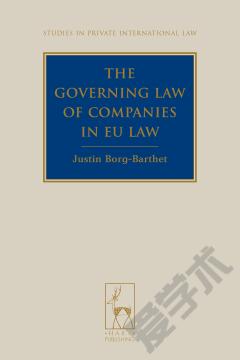The Governing Law of Companies in EU Law
1 Introduction 1.1 Aims 1.2 Scope 1.3 A History in Brief 1.4 Are Conflicts of Corporate Laws Still Relevant? 1.5 Provisional Conclusions 2 The Principle of Party Autonomy 2.1 Introduction 2.2 A Global Movement Towards Party Autonomy? 2.3 Analogies with Contract Law 1 2.4 Economic Analyses of the Conflict of Corporate Laws 2.5 Conclusions 3 The Plural Aims of Conflict of Corporate Laws 3.1 Introduction 3.2 Targeted Protective Mechanisms 3.3 Enduring Divergence in Corporate Law, and Potential Exceptions in Private International Law 3.4 Conclusions 4 Party Autonomy in European Law 4.1 Introduction 4.2 The Constitutional Treatment of Party Autonomy 4.3 The Origins and Purpose of Article 50 4.4 The Substantive Effects of Harmonisation on Party Autonomy 4.5 Supranational Business Vehicles 4.6 Conclusions 5 The Freedom of Establishment Judgments 5.1 Introduction 5.2 Centros et al in Context: the Treaty Provisions, the 1968 Convention and Daily Mail 5.3 The ECJ's Liberalising Judgments 5.4 Cartesio 5.5 The Present State of EU Law 5.6 Conclusions 6 Options for Future Development 6.1 Introduction 6.2 Option 1: the Status Quo 6.3 Option 2: the Status Quo Ante 6.4 Option 3: Unification or Supranationalisation of Corporate Law 6.5 Option 4: a New Regulatory Framework 6.6 Conclusions
{{comment.content}}








 京公网安备 11010802027623号
京公网安备 11010802027623号